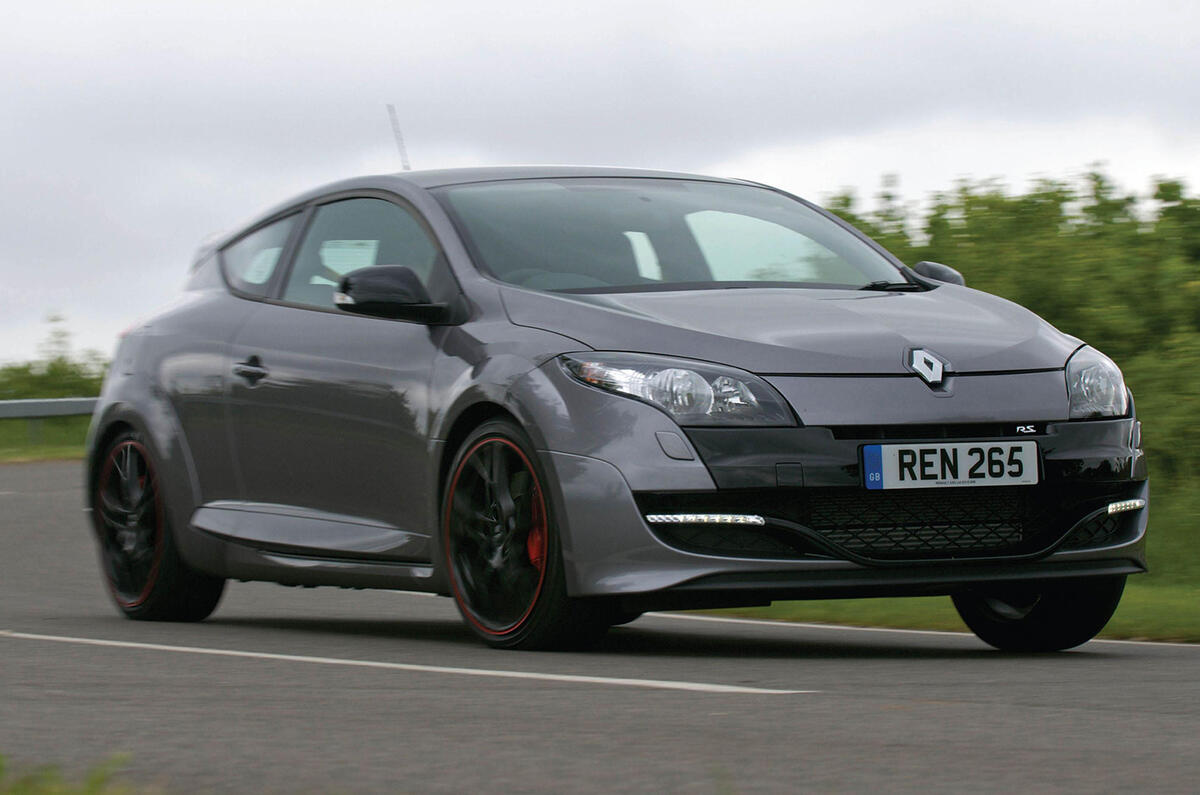It's always been one of those 'down the pub' type of questions: how much faster could a road car be made to go if you fitted it with a set of slick tyres?
And would you even be able to drive it on slicks anyway, given how sensitive all the electronic systems are on modern road cars nowadays?
The answer is, yes you can, and the extra speed you can generate when doing so will most likely frazzle your mind. We proved as much when we went to the Motor Industry Research Association recently with a standard Rénaultsport Mégane 265 and a pile of various Avon tyres.
The Mégane normally comes with either Dunlop Sport Maxx or MichelinPilot Sport tyres fitted as standard, but to get a benchmark time I first drove it around the same handling circuit we use for our road tests on a set of Avon's tastiest high-performance road tyres, the ZZ5s (Avon's equivalent of a Pilot Sport, basically).
The art of tyre testing is a black one, of course, but the key thing to achieve is a consistent set of lap times so that you know, with absolute certainty, that it's the tyre generating the lap time and not you being especially handy on one particular lap or corner. So only when you can lap within a couple of tenths of a second on three laps consecutively do you actually start measuring the data.
After a few laps getting up to speed I did a 1min 16.4sec on the ZZ5s, then 1min 16.3sec, followed by another 1min 16.4secs. So that's what the Mégane will do with me at the wheel on a set of high-performance Avon road tyres.
At that point we bolted on a set of Avon's slick tyres – the same compound used in GT racing – and got the stopwatches out once more. Avon's chief lunatic – sorry, chief tyre tester – and all-round good chap Jaques Jansen wasn't sure precisely how much faster the Mégane would go on the slicks, but his guess was that it could be "half a second, maybe a second quicker at a pinch".
After a couple of gentle laps to warm them up I started to push the Mégane's slicks a little bit harder, and instantly the car felt like it was glued. The steering was a touch heavier but there were no antics whatsoever from the traction control or the ESP systems. Instead, the Renault just felt pinned everywhere. I could carry much more speed into and generate massively more traction out of each corner, and under brakes it was spooky how much sharper the Mégane felt.




Join the debate
Add your comment
What....?
What sort of "Chief Tyre Tester" could possibly think that slicks would only make a 0.5 sec improvement over road tyres???????????
What...?
Perhaps one that has never experienced slick tyres on a road car before...? No idea who this Jaques Jansen character is but he sounds like a hero to me.
Wear rates?
Slick tyres sound super fun but, even if they were legal, how long would a set last on the road? Any chance Autocar could find out? Also, why not run the test again in a few months time when the track is much colder. I'm certain the results would be very different. Road tyre development has kept pace with that of cars to provide the best compromise for all expected conditions. Nonetheless, it was still a fun experiment, well executed and clearly explained.
Relatives..........!!!
Of course any car will go faster on slicks. Porsche against a GTR on slicks?,,same answer.